The Hammer
Simon de Pury on Defying Art Market Pessimism (and Crocodiles)
Following the outstanding sale of her collection, the veteran auctioneer looks back on his friendship with Monique Barbier-Mueller.
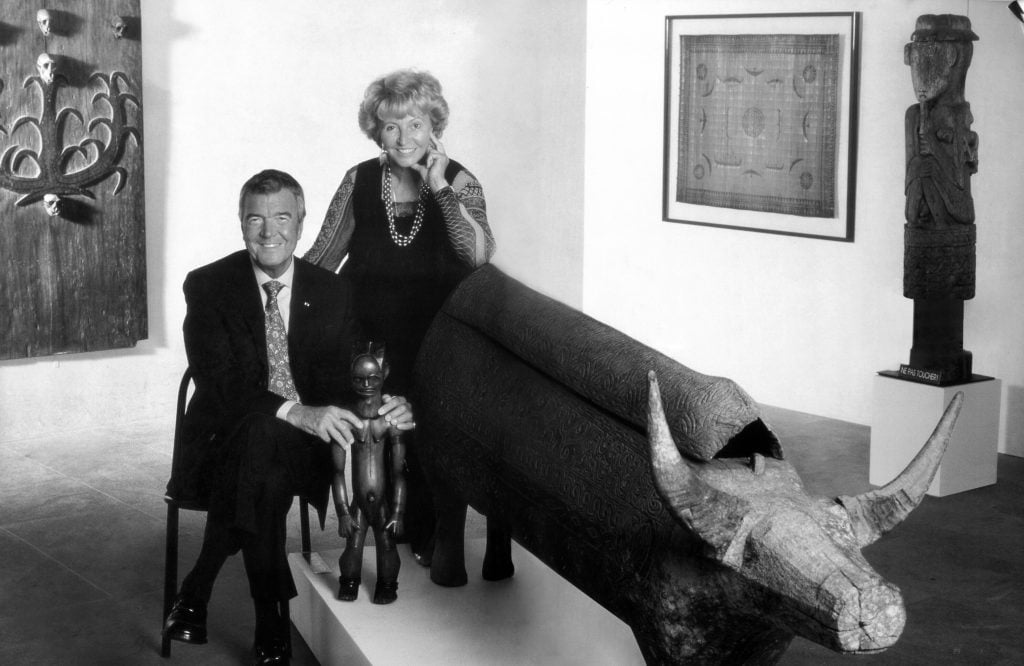
Every month in The Hammer, art-industry veteran Simon de Pury lifts the curtain on his life as the ultimate art-world insider, his brushes with celebrity, and his invaluable insight into the inner workings of the art market.
I am writing these lines as a not negligible part of the travelling circus, that is the art market, is on its way to migrate to Hong Kong. Art Basel with all its linked attractions is luring art lovers and professionals alike following frieze Los Angeles and TEFAF Maastricht with the already third important art fair taking place this year. This month has also seen Sotheby’s, Christie’s and Phillips hold their first London sales week of contemporary art of the year.
The mood is not exactly euphoric. With the many, to put it mildly, highly unpleasant events happening around the world lately, it should not be totally surprising that a cooling down would happen at some stage. In Katya Kazakina’s fascinating Artnet article on the last round of auctions, Jeffrey Deitch, who like me has been around for a little while, is quoted as saying “It’s not a soft landing.”
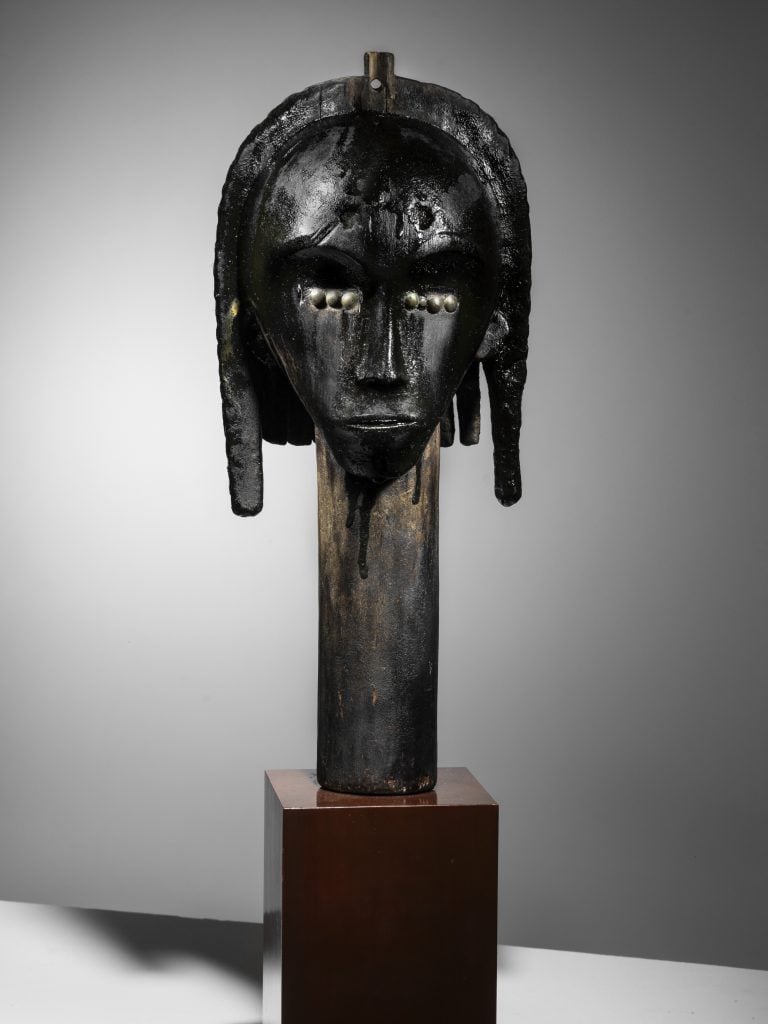
Tête de reliquaire Fang, Gabon. Collection Antony Innocent Moris (1866-1951), Paris
Collection Josef Müller, Soleure, acquis en janvier 1939. Sold for: €14,7M. Photo: Vincent Girier Dufournier. ©Christie’s Images Lmt 2024.
Yet earlier this month Christie’s has demonstrated in Paris that even in an adverse climate an absolute triumph can take place when a collection of outstanding quality comes onto the market. The ‘Barbier-Muller: Art as Legacy’ auction of African and Oceanic which was estimated to bring € 25,625,000 to € 39,790,000 was sold for a total in excess of € 74 million (with fees). It included a selection of 100 sensational works assembled by Swiss collector Josef Müller (1887-1977), his son in law Jean-Paul Barbier-Mueller (1930-2016) and his daughter Monique Barbier-Mueller (1929-2019). It represents only one facet of what an all consuming passion, coupled with stellar connoisseurship, has allowed this unique collecting dynasty (their sons have and are continuing to collect to this day) to put together.
My heart smiled when I saw the results of this historical auction. One of the great privileges and joys in my life was to befriend Monique and Jean-Paul Barbier-Mueller. You never know who your real friends are, and if you have any at all. It is only when you go through a rough patch in life that you may discover so. It is in such moments that Monique Barbier-Mueller revealed herself as probably the best friend I ever had. Monique and I shared the same birthday. She was reserved, suffered no fools, and extremely direct and frank. She had a boundless curiosity and appetite for adventure.
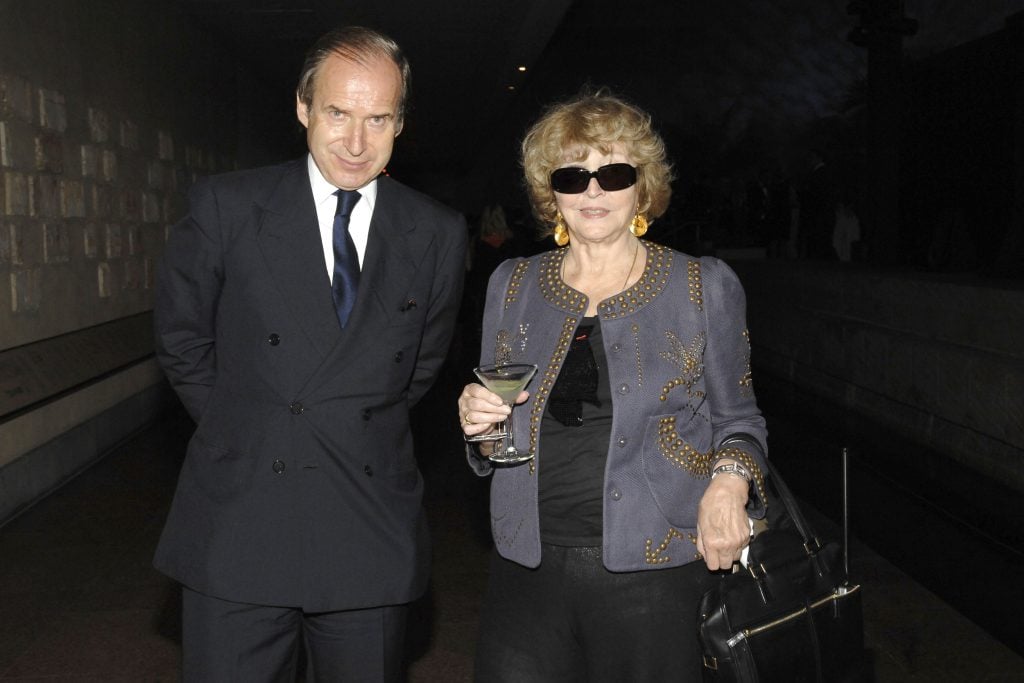
NEW YORK CITY, NY – JUNE 2: Simon de Pury and Mrs Jean Paul Barbier-Mueller attend VACHERON CONSTANTIN Unveils “LES MASQUES” at the Metropolitan Museum of Art on June 2, 2009 in New York City. (Photo by Neil Rasmus/Patrick McMullan via Getty Images)
During the 1990’s I was able to accompany Monique on three trips to Mali which provided some of the most memorable moments of my life. When we arrived for the first time in Bamako, I mentioned to her that I had seen fabulous photographs by Malick Sidibé in the collection of Jean Pigozzi. We queried our driver if he knew him. He didn’t, but in no time at all he found out, and twenty minutes later we were in Sidibé’s studio.
It was instant love not just with his amazing work but with him as well. I asked him if he was a friend of Ali Farka Touré, a musical hero of mine. He was, and told us that Touré was living in a little village called Niafunké. To get there from Bamako one had to drive for eight hours to Mopti and from there take a dugout canoe for another eight hours. No obstacle was ever too big for Monique. She asked Malick to join us and off we went on this expedition.
The effort to get there was well worth it. In a region of total aridity and desertification Niafunké stood out for its lush vegetation. The worldwide sales of his records were reinvested by Ali Farka Touré into irrigation systems and providing his extended family with optimal living conditions. Once we arrived, tired but happy after our long trip, he treated us with a feast of a meal and a phenomenal private concert he gave accompanied by other great musicians such as Afel Bocoum. Ali Farka’s music was haunting. It is based on what is considered to be the ancestor of American Blues. His skills as a guitar player were outstanding and he was regularly listed by Rolling Stone Magazine as one of the greatest guitar players in the world.
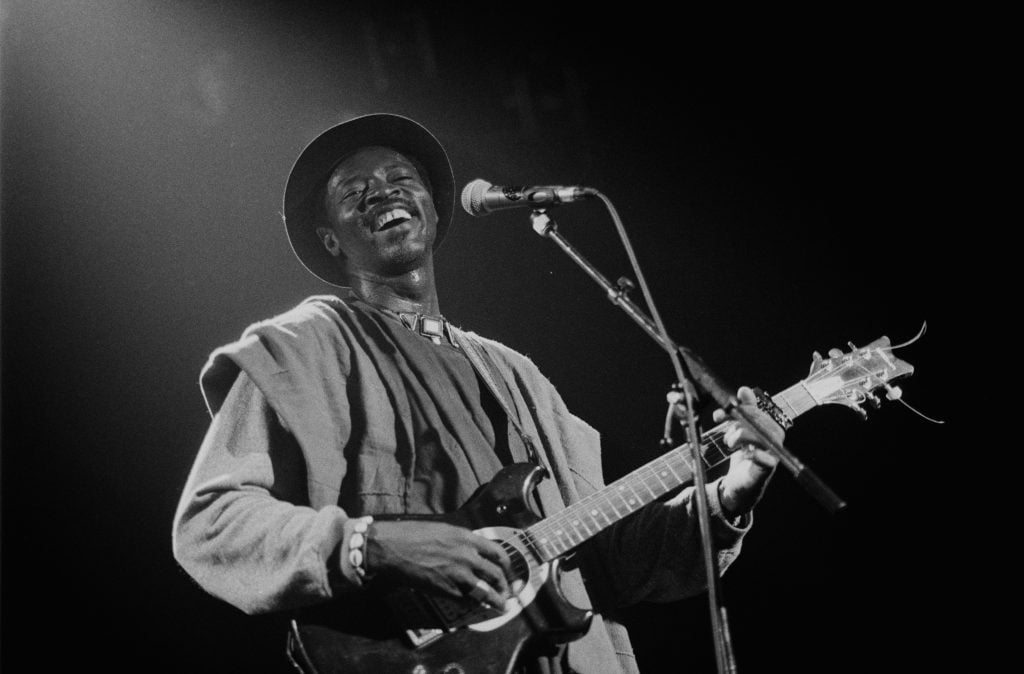
Malian guitar player Ali Farka Toure performs at the Melkweg on 15th June 1994 in Amsterdam, Netherlands. Photo by Frans Schellekens/Redferns.
The next morning we left early for the long boat ride back to Mopti. After several hours in sweltering heat on the Niger, at a place that was infested with crocodiles, Malick Sidibé expressed the wish of eating something. The two people who were taking turns at the rudder of the boat installed a little cooker and lit a little fire under it, to warm the food. As I was leaning over to Monique, to listen to what she was telling me, I suddenly saw huge flames that were engulfing the near totality of the dugout. I was in panic asking myself if it was better to be burnt alive or eaten up by crocodiles. I also thought that it was quite extraordinary that Monique and I would not only share a birthday but would die on the same day!
I had one of the earliest huge cell phones with a special satellite antenna and concluded that it was pointless to call my loved ones to give them a live account of my predicament. Then a miracle happened as the two gentlemen in charge of the dugout eventually managed to control and extinguish the fire with two blankets. I was so much in shock that it took me a while to be able to speak again and realize that we were actually going to be ok. Monique laughed at me and said “relax, this is perfectly normal, this is Africa!” That evening in Mopti we ate what remains my happiest dinner ever. My moniker as DJ Crocodile or as the Swiss Crocodile goes back to having survived this adventure.
Monique Barbier-Mueller used this new friendship with Malick Sidibé to organize a musical competition all over Mali to compose songs that would make the public aware of the dangers of AIDS and what could be done for prevention. Sidibé documented all this with photographs and musical tapes that were shown at the Venice Biennale in 2007. He won that year the Golden Lion for Lifetime Achievement and thus became the first photographer and the first African artist to be awarded this prestigious award.
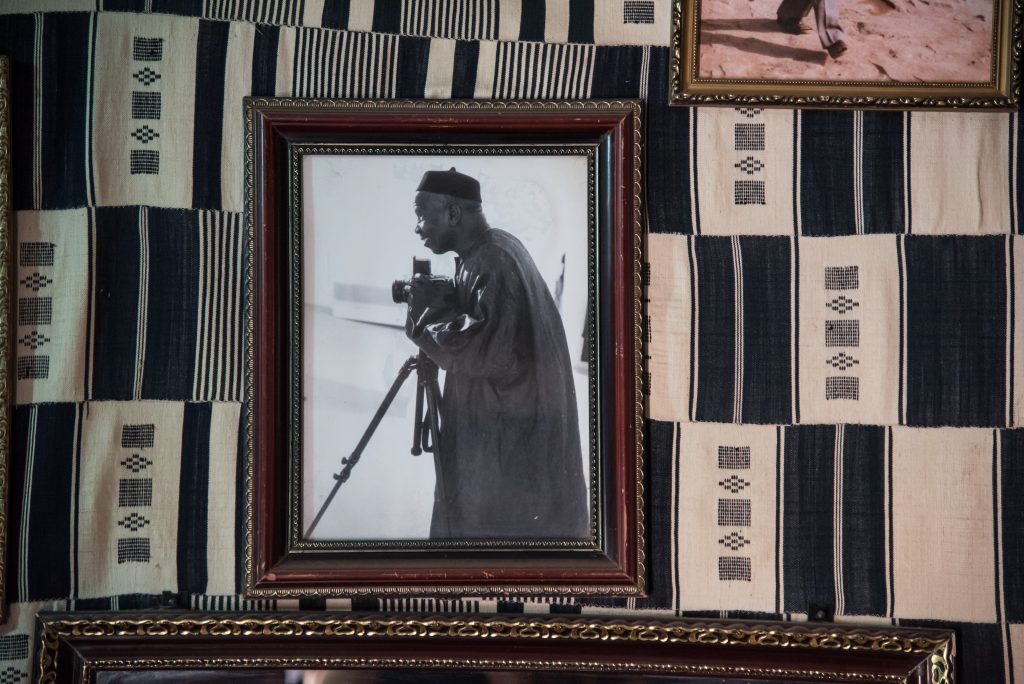
A framed photo of the Malian photographer Malick Sidibé, seen at his photo studio, which is now run by his son Karim Sidibe after his death, in Bamako, Mali on February 27, 2017. Photo by Nicolas Remene/Anadolu Agency/Getty Images.
Passion is what is at the basis of the greatest collections ever assembled. There is a certain justice in the fact that very often the best investments are made by people who are driven by passion, curiosity and connoisseurship and don’t buy primarily for financial gain.
The performance of the art market as a whole in 2024 will very much depend on the purely accidental circumstances of if—and when—collections of the caliber of the Barbier-Mueller, Macklowe, Paul Allen, or Fisher-Landau will appear on the open market.
I have just read the brilliant ‘Intelligence Report’ edited by Artnet News contributor Julia Halperin with an in-depth analysis and multiple data on how the art market performed in 2023. It reinforced in me what some of the dangers, pitfalls and obstacles the art market will have to face in the short term and what it can do to not only overcome these but to bring the art market to a completely new and different level. I plan to make my next column the focus of these observations.
Simon de Pury is the founder of de PURY, former chairman and chief auctioneer of Phillips de Pury & Company, former Europe chairman and chief auctioneer of Sotheby’s, and former curator of the Thyssen-Bornemisza Collection. He is an auctioneer, curator, private dealer, art advisor, photographer, and DJ. Instagram: @simondepury





